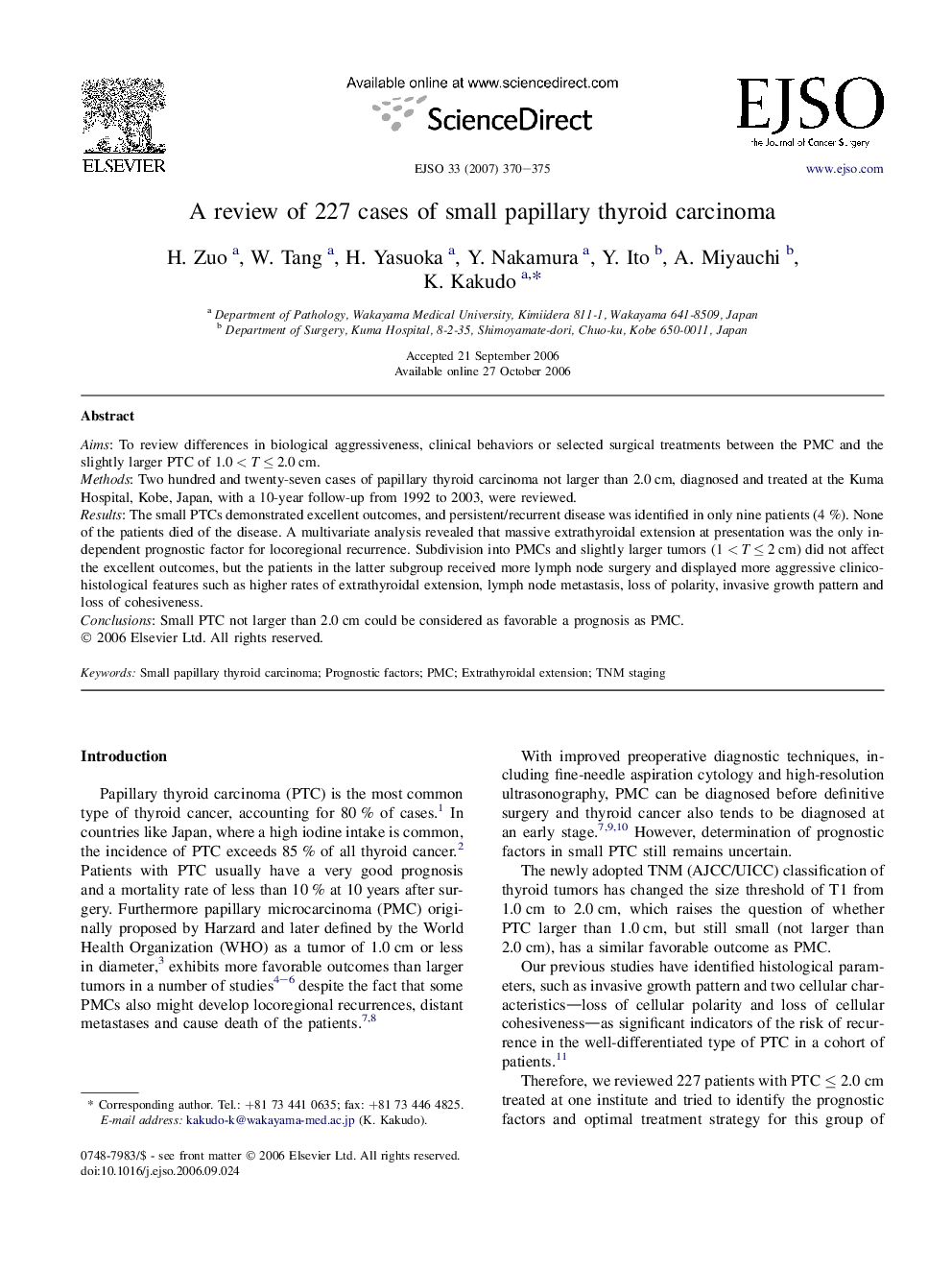| Article ID | Journal | Published Year | Pages | File Type |
|---|---|---|---|---|
| 3987743 | European Journal of Surgical Oncology (EJSO) | 2007 | 6 Pages |
AimsTo review differences in biological aggressiveness, clinical behaviors or selected surgical treatments between the PMC and the slightly larger PTC of 1.0 < T ≤ 2.0 cm.MethodsTwo hundred and twenty-seven cases of papillary thyroid carcinoma not larger than 2.0 cm, diagnosed and treated at the Kuma Hospital, Kobe, Japan, with a 10-year follow-up from 1992 to 2003, were reviewed.ResultsThe small PTCs demonstrated excellent outcomes, and persistent/recurrent disease was identified in only nine patients (4 %). None of the patients died of the disease. A multivariate analysis revealed that massive extrathyroidal extension at presentation was the only independent prognostic factor for locoregional recurrence. Subdivision into PMCs and slightly larger tumors (1 < T ≤ 2 cm) did not affect the excellent outcomes, but the patients in the latter subgroup received more lymph node surgery and displayed more aggressive clinicohistological features such as higher rates of extrathyroidal extension, lymph node metastasis, loss of polarity, invasive growth pattern and loss of cohesiveness.ConclusionsSmall PTC not larger than 2.0 cm could be considered as favorable a prognosis as PMC.
